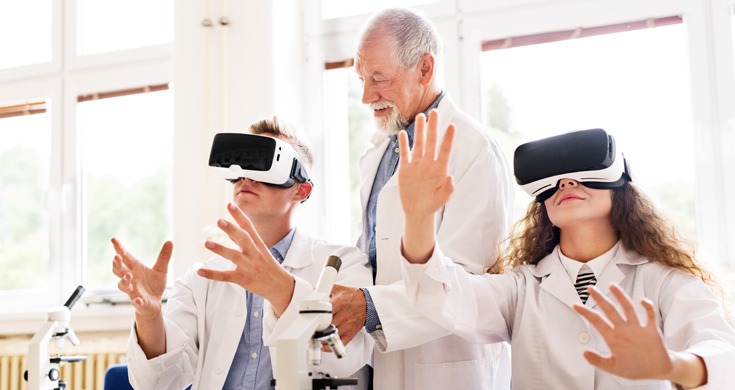Thanks to Google’s newest virtual reality (VR) platform, classrooms around the country are now able to push the boundaries of scientific experimentation using a virtual lab—without incurring physical risks or encountering time/space limitations or significant financial challenges.
This latest VR project is comprised of a virtual reality science lab that enables students to perform a wide range of hands-on, interactive lab experiments online, using virtual reality technologies. So far, Google has partnered with remote VR lab creator Labster to develop 30 VR laboratories in colleges throughout the US.
How a Virtual Lab Works
Based in Copenhagen, Labster has been creating virtual labs for educational facilities since 2013, but the move to VR is a new one that promises to take science experimentation to a new level unhampered by physical limitations. Already, students at Arizona State University are marveling at how limitless scientific experiments can be when they’re taken out of the realm of the physical world. Now, students can construct theorems with 3D molecules, or conduct experiments with virtual beakers without worrying about spilling acids and other corrosive liquids.
Instead of microscopes and slides, these VR labs require a compatible VR headset such as Google Daydream or Lenovo Mirage. At present, this first edition of VR labs is geared toward undergraduate biology students, and features lessons in RNA extraction, gene therapy, and cytogenetics. Lab fees start at $50, and students can either borrow a headset from the college for free, or purchase one for around $400.
Advantages of VR Labs
As with video games, students navigate their way through the lab using handheld remotes. While the graphics resemble an animated video game, the content is as serious as any science textbook. In one lab safety exercise that illustrates the advantage of using VR over real lab equipment, students are actually required to spill acid, then clean it up incorrectly so that it “splashes” in their face, causing the screen to temporarily blur while students are directed to a virtual eyewash station.
Likewise, students are able to conduct experiments on virtual lab animals instead of real ones— and in doing so can re-dissect the same “virtual animal” repeatedly until they do it correctly. Plus, VR enables students to work with valuable (or explosive) chemicals they would never be able to get their hands on otherwise, as well as easily manipulate DNA and other microscopic components.
Another major advantage is that students who would never have access to a sophisticated lab are now able to conduct highly-sophisticated scientific experiments with the click of a button. According to Labster, this platform enables any classroom to have access to a million-dollar lab.
The economic benefits of using a VR lab aren’t confined to the costs of traditional lab equipment such as microscopes and chemicals. For example, in 2019, Case Western Reserve University plans to start replacing its anatomy labs with VR simulation—in part to defray the high cost of supplying real cadavers for experimentation.
The main drawback, however, is that, due to the one-on-one nature of the platform, students can’t interact with each other in a traditional classroom setting— a situation that developers are hoping to remedy by eventually creating platforms that can be engaged in by multiple users.
The Future of Virtual Reality Science Labs
So far, VR science labs have been in testing mode, implemented in only a handful of US colleges and universities. One of these is Arizona State University, where 782 students are currently enrolled in an online biology degree program that utilizes VR labs. In the near future, these VR labs will be available at a larger number of institutions, including the University of Texas at San Antonio and MIT. Likewise, plans are being made to make online VR science labs accessible for students in middle school and high school as well.
While some educators have expressed concerns that too much use of virtual reality might hamper a budding medical student’s abilities to interact with human patients, many professors are advocating the use of “mixed reality” learning. And the benefits are already clear for using this technology for learning.
If your student enjoys learning using technology, consider a virtual school, which features online lessons, interactive activities, and virtual classroom sessions. Visit K12.com to learn more!




































